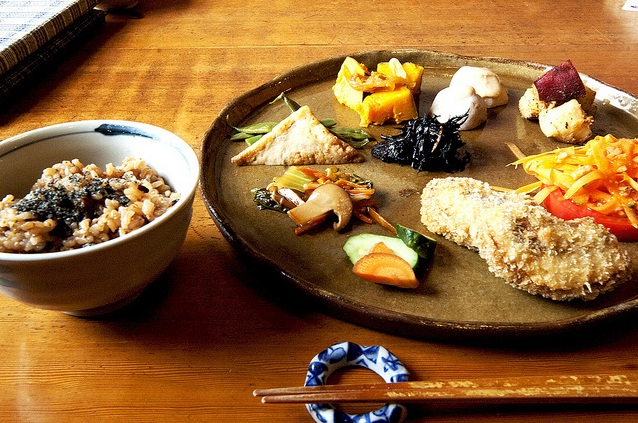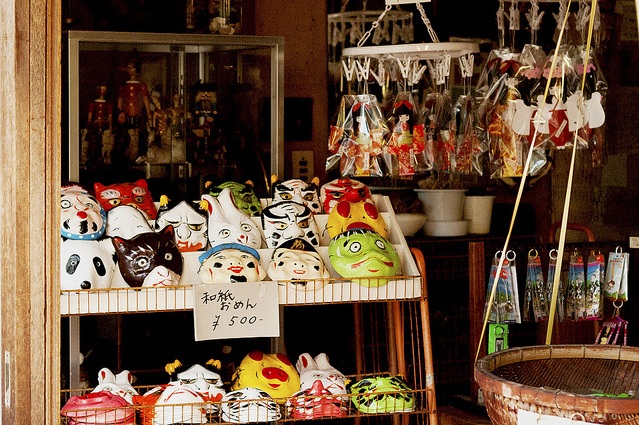Learning Japanese can be a lot of fun for kids. There are some fun words to pronounce, new things to describe and experience, and a unique skill to share with friends. It is also a great language for kids to learn because of the simplicity of the loan words from English which will give English speaking kids an instant vocabulary to draw on, and how easy it can be to pronounce with just a little practice.
Japanese Vocabulary for Kids
A good place to start when teaching kids Japanese is to elicit some of the Japanese words they already know and show them the correct pronunciation. Words like “ninja” and “sushi” don’t require much practice at all. Words like “tofu” and “futon” only need the softer hu/fu sound of Japanese and a little look at how the vowels are pronounced. On the other hand, words like “karate” and “karaoke” are pronounced differently from the English.
After that, kids will be much relieved to hear that there are a lot of words from English that can be used in Japanese with a little change in the pronunciation. A lot of these words are foods, and it can be easy to start with them. Teaching kids to stretch out some of the Japanese vowels can be a lot of fun.
Kids enjoy nonsense words, and getting kids to say “hamburger” as hambaagaa—can be fun. There are lots of words from English and it can be a lot of fun for kids to learn the new pronunciations for them. It is important also to let kids know that not all English words will be understood in Japanese even when spoken with Japanese pronunciation. Also, not all foreign loan words come from English. Another fun group of words to cover with students are those that come from languages other than English such as “pan” for bread and “zubon” for pants. “Zubon” actually makes for a good lesson because while that word refers to pants such as long pants worn every day, “jiinzu” can be used to refer to jeans. The Japanese loan word “pantsu” however generally refers to underwear.
Another fun type of vocabulary for kids to learn are words that describe things that are not as common outside of Japan. These words tend to need a phrase in English to describe them, though a picture could be worth a thousand descriptive words in teaching it to kids. There are a myriad of food words – from sushi (sushi) to anko (sweet red bean paste) to takenoko (edible bamboo shoots), as well as animals, household words, and more.

The last type of word I would focus on for kids are masks

Japanese Vocabulary Activities
A few activities for kids to practice Japanese words:
• The first way you can have a lot of fun with English loan words is by getting kids to guess what you are saying when you say them. There are obvious ones such as “resutoran” (restaurant) that the students might get quickly, but less obvious ones such as “kyabetsu” (cabbage), or “gareeji” (garage) that can require some guess work.
• Play the game known as “telephone” or “grapevine”. The students line up, and the first student receives a foreign loan word. They whisper it quietly to each other down the line until the last student in line has to guess the word and say it in Japanese pronunciation as well. If everyone does a good job of pronouncing it, everyone wins!
• There is a great game that came from an old Japanese quiz show called “Majikaru Zuno Pawa“(Magical Brain Power) in Japan for practicing vocabulary and quick thinking. The game can be slowed down to fit students of any level, or even allow students to work from a predetermined list of words. The game is called “Magical Banana” and the players start with a word and then have to take turns naming a related word without breaking the rhythm (which can be maintained by clapping or snapping one’s fingers). Players who say repeated words or words that are not really related to the previous one are out.
Here is an example:
fuyu (winter) – yuki (snow) – koori (ice) – mizu (water) – skyuba (scuba) – tanoshii (fun)
In the above example, the last person who said “tanoshii” would be out because it’s an opinion and not directly related. When playing with kids though, it could be best to just make sure that they are saying actual Japanese words and keep them coming. For beginning levels, you may even want to forget about having them say related words and just be satisfied if they can get a long string of Japanese words based on a general topic or theme.
• Another game inspired by the game show is “Majikaru Cheenji” (Magical Change). In this game, a word is used to start off the game and the last syllable of that word has to be used as the first syllable of the next word. Anyone ending a word with “n” is out because so few real words begin with the sound.
Here is an example:
banana (banana) – nashi (pear) – shinkansen (shinkansen / bullet train)…
In this case, the person who said “shinkansen” is out for ending with the “n” sound.
Here is another example:
nashi (pear) – shiitake (shiitake mushroom) – keeki (cake) – kimono (kimono) – …
.. and it can go on like that for a while.
• In the age of the internet, pictures abound and kids can easily find a visual to go along with words they are learning. Using pictures for kids to quiz each other on Japanese words can be a lot of fun. This is especially useful when working with some of the words that kids may not see too much outside of Japan such as “kotatsu” (a small, low table with a heating unit built into it), or “tatami” (tatami, or the woven straw mat used as flooring in many Japanese homes).
• Another great game for language learners to play is something like the popular game “taboo”, only for learners of a second language, there do not really need to be any taboo words established. They can look at pictures of different things and use words to describe them for their teammates to make guesses at.
• A related way to practice vocabulary is a foreign language game of 20 questions, done in small groups to keep the kids using Japanese
• An activity for very small kids is to have a lot of different useful images spread around the room and ask them to touch them when they match the word you said. If you say “Touch something blue,” for example, or “Aoi mono wo sawatte,” kids will dash around the room to find something blue to touch. Students can take turns saying what they should touch and practicing their Japanese speaking as well.
Using Japanese Words for Kids
The next step in mastering some of the Japanese vocabulary words kids are learning are to give them some simple sentences and letting them express themselves. One suggestion might be to teach them how to say the like (–ga suki desu) or don’t like (–ga suki janai) something.
Letting them quiz each other using pictures or drawings, and asking “Kore wa nan desuka?” to ask “What is this?”, and to answer saying “It is a Japanese radish,” using the proper pattern “Daikon desu,” can also be a great way to make activities more student-centered.
Simple sentences in Japanese are a great way for kids to get used to using and pronouncing Japanese and helping them increase their active vocabularies as well.
Conclusion and Helping Kids Learn Japanese
For kids interested in animation, manga, ninjas, samurais, martial arts, Japanese food, or other aspects of Japan, learning Japanese can be a great experience. When teaching a foreign language, it’s important to try and give kids a chance to be tactile or physical and actually handle real things from Japan and move around while learning, as well as to provide lots of opportunities for the students themselves to say the words, use them, and interact with each other. Using pictures, videos, rhythm, music, listening, speaking, and movement can be a great way to keep things interesting.